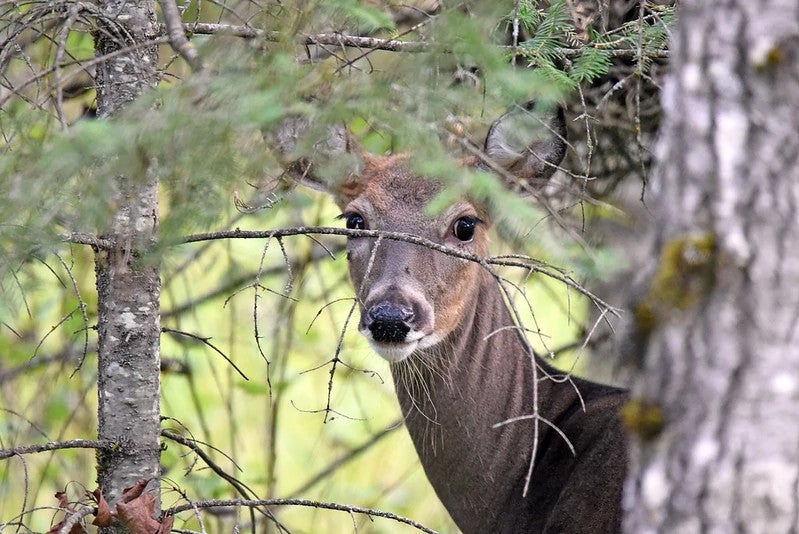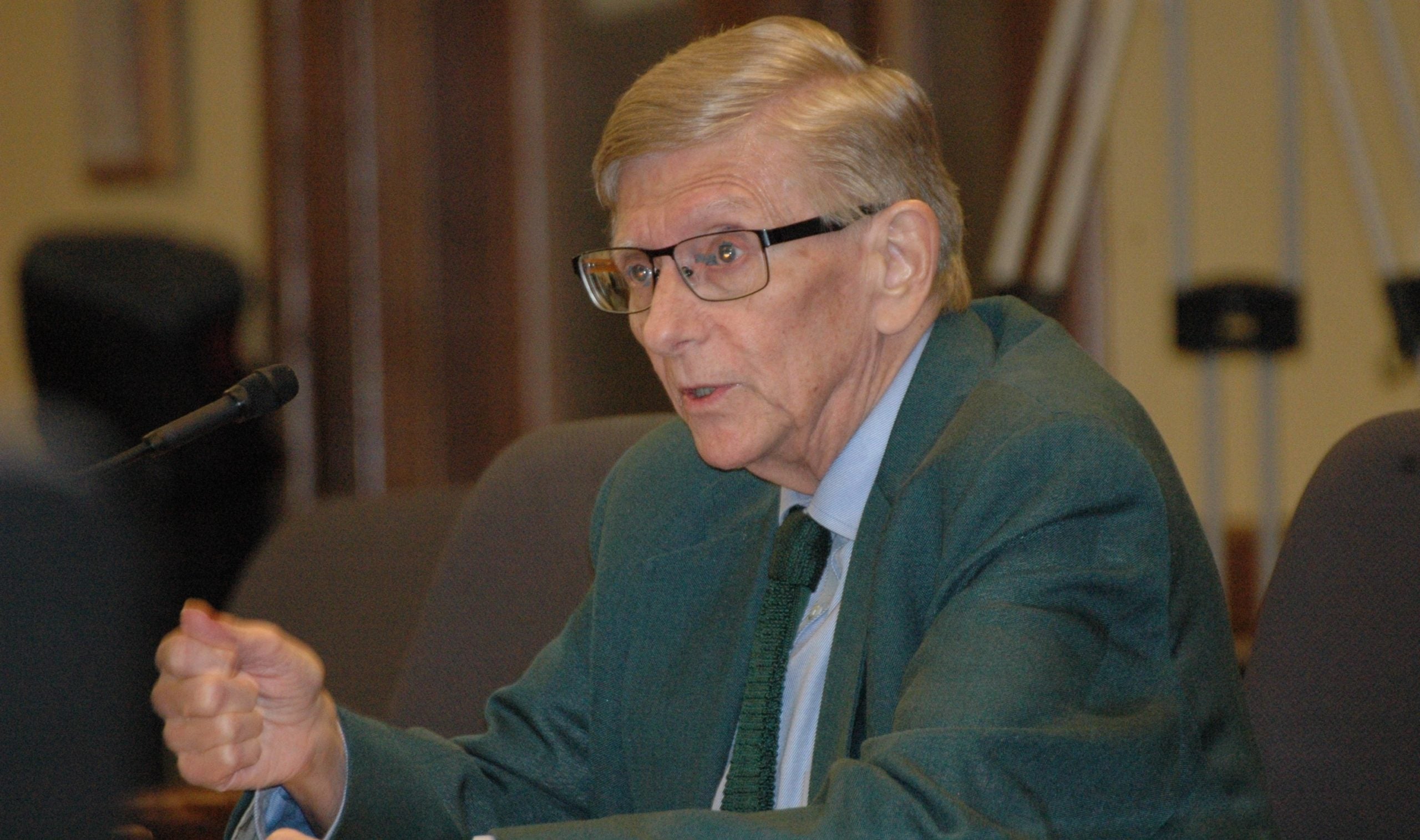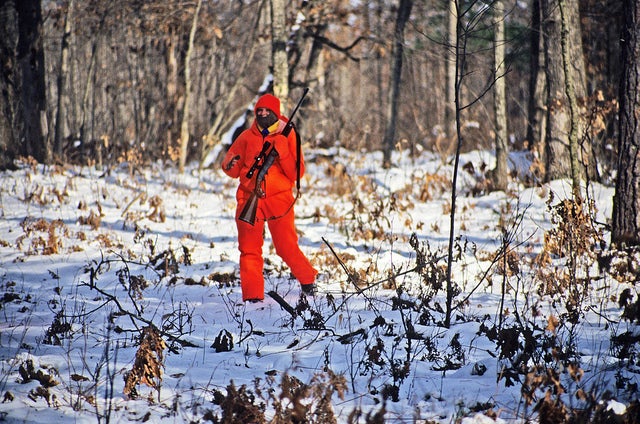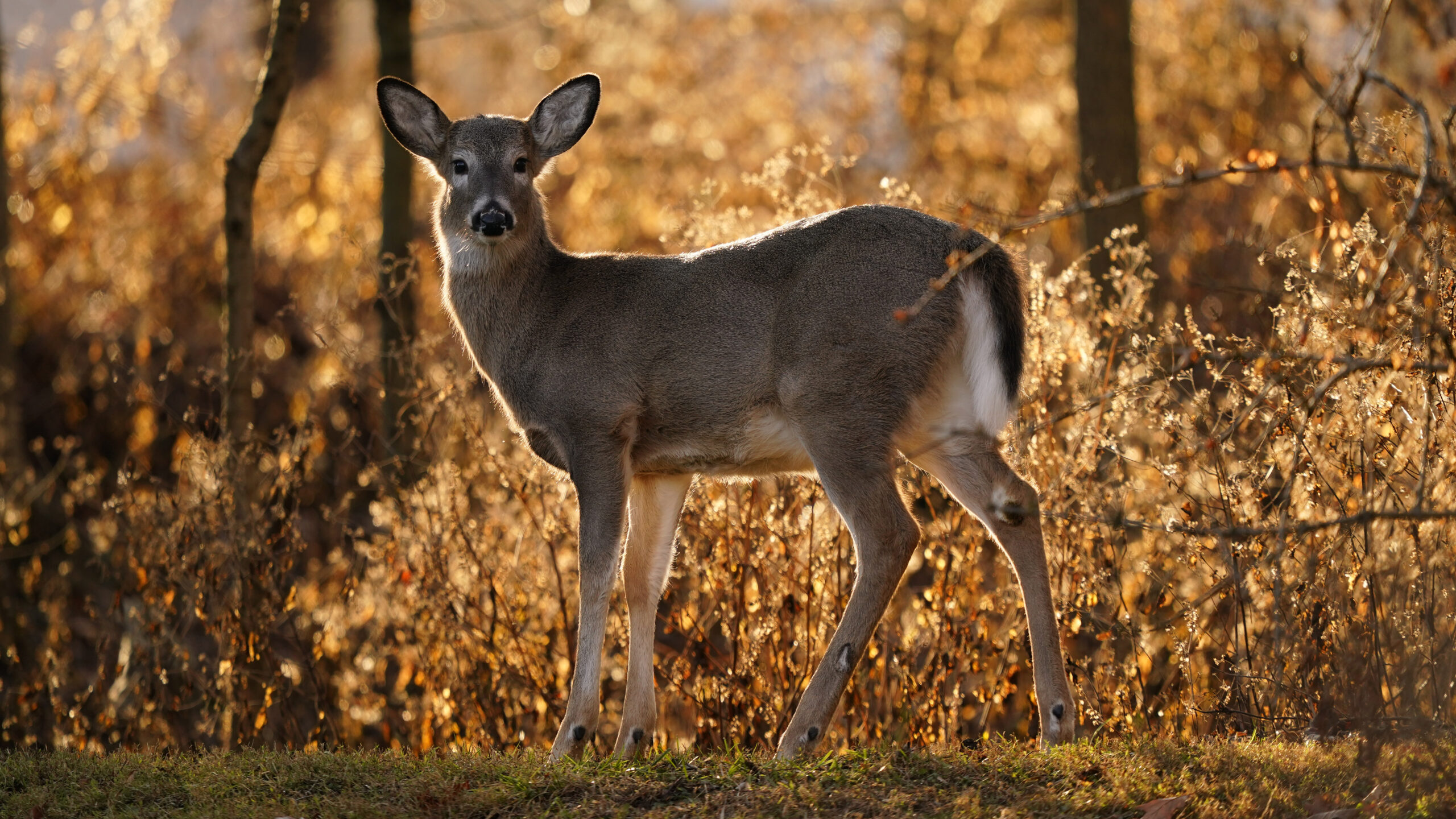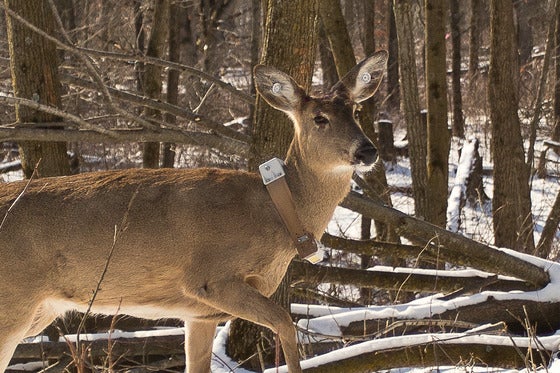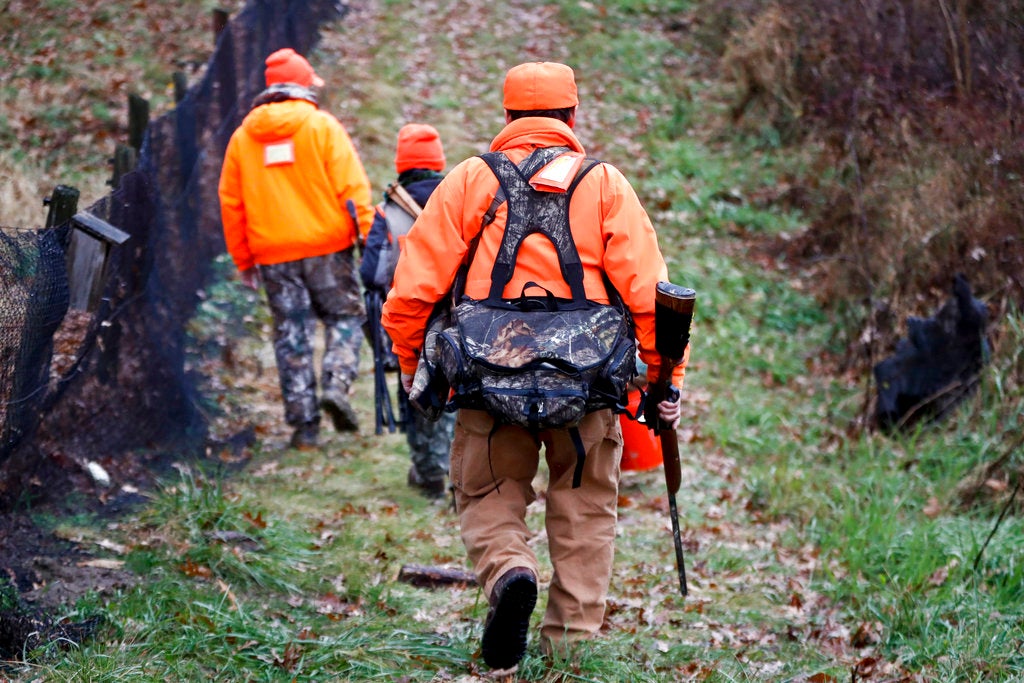Chronic wasting disease has now spread to more than 75 percent of counties in Wisconsin as the state continues to see new detections in deer.
The disease has been found in either wild or farm-raised deer in 55 of the state’s 72 counties. The Wisconsin Department of Natural Resources released sampling results Monday that revealed new detections in wild deer.
Erin Larson, the DNR’s deer herd health specialist, said wild deer tested positive for the disease for the first time in Pierce, Menominee, Chippewa and Manitowoc counties.
“CWD is a really tough disease. It’s real slow progressing, so a lot of times that spread may take a number of years,” Larson said. “But we still have a lot of areas where we have very low prevalence rates or low numbers of positives.”
Overall, the DNR reported that 1,786 deer tested positive for the deadly disease last year, representing more than 10 percent of 17,399 deer sampled. Larson cautioned that the results don’t represent a statewide rate for the disease. She said the vast majority, or 89 percent, of positive detections were in animals from southern Wisconsin.
CWD was first detected near Mount Horeb in 2002. Areas of Richland, Sauk and Iowa counties have seen the highest prevalence of CWD with up to 50 percent of adult bucks infected with the disease, which attacks the brains of its victims and causes death over time.
Testing showed no new detections among farm-raised deer, although some facilities continue to test positive.
Members of northern Wisconsin tribes have voiced frustration with the spread of CWD.
Earlier this year, Natural Resources Board member Doug Cox, who is a member of the Menominee Indian Tribe, shared concerns that regulation of deer farms is lacking. Past proposals to require double-fencing of deer farms have drawn pushback from the deer farm industry and some GOP lawmakers.
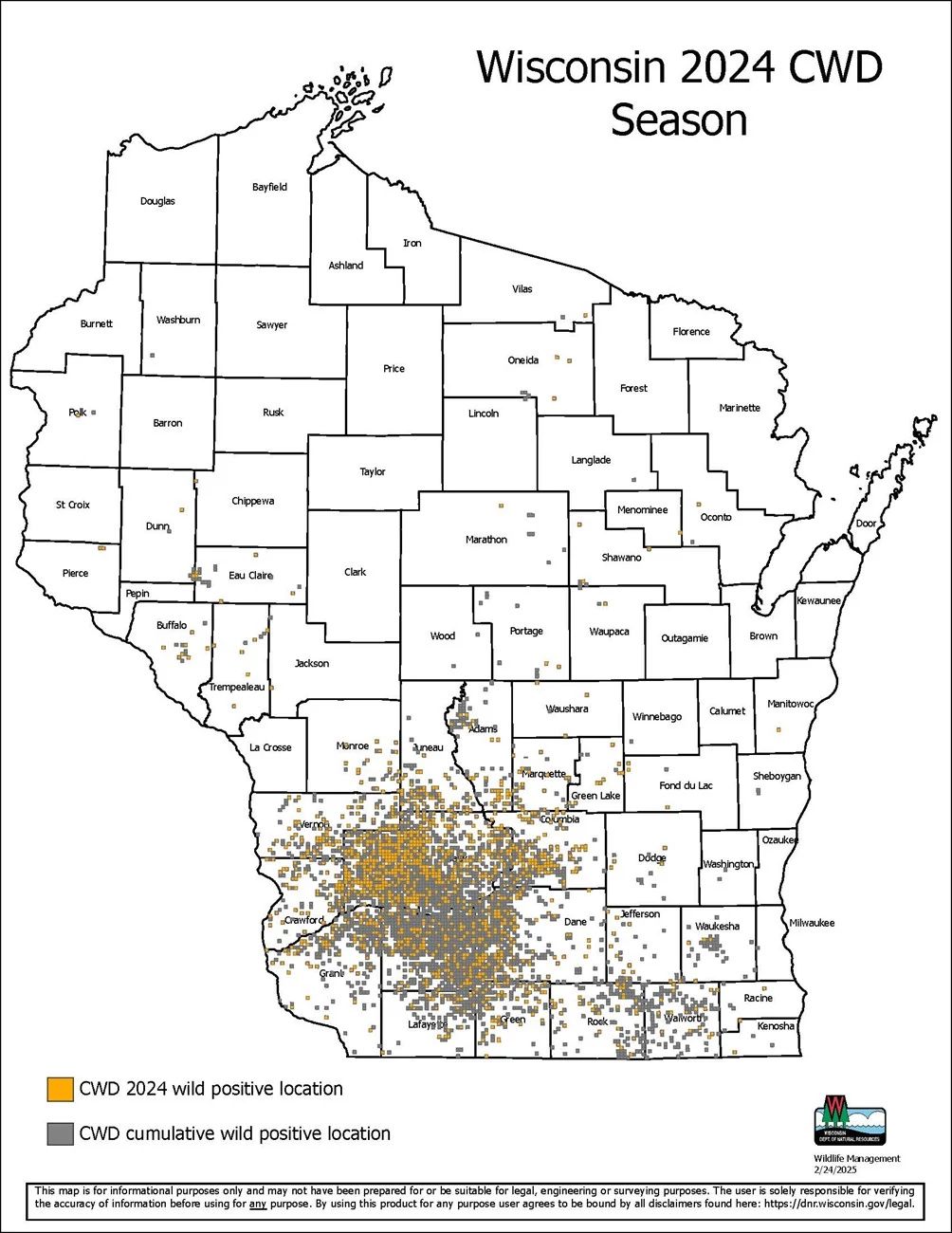
News with a little more humanity
WPR’s “Wisconsin Today” newsletter keeps you connected to the state you love without feeling overwhelmed. No paywall. No agenda. No corporate filter.
Tom Hauge, co-chair of the wildlife work group for Wisconsin’s Green Fire, said the DNR is doing a good job with monitoring the disease. However, the former director of the DNR’s wildlife management program said the results show CWD continues to spread.
“CWD is winning,” Hauge said. “We’re doing a good job of documenting that spread, but we’re missing in action in terms of putting plans in place or attempting to try to address how we can slow down the spread, as well as how can we reduce the prevalence where it’s high.”
Larson said the best tool for slowing the spread of the disease is to encourage hunting and harvesting more deer in areas with lower rates of infection. Although, she acknowledged the state is challenged with declining hunter participation as baby boomers age out of hunting and fewer young people take their place.
Hauge said states like Illinois have worked with landowners to harvest more deer in CWD-infected areas, and western states have increased harvest of bucks that have higher rates of the disease.
“The next plan for the state of Wisconsin, I think, really needs to include some research pilots to see what will work in our state,” Hauge said.
The state’s 15-year CWD response plan is set to expire at the end of this year. Larson said work to update the plan is ongoing, adding there will be opportunities for public input. An updated plan will be presented to the Natural Resources Board later this year.
Larson added that the recent CWD study in southwestern Wisconsin showed the disease can potentially reduce survival rates and cause deer numbers to decline in areas with higher rates of infection.
“What we want to do is everything that we can to keep our areas where we’ve detected it at low prevalence [rates] … to not climb to the higher numbers of positives,” Larson said.
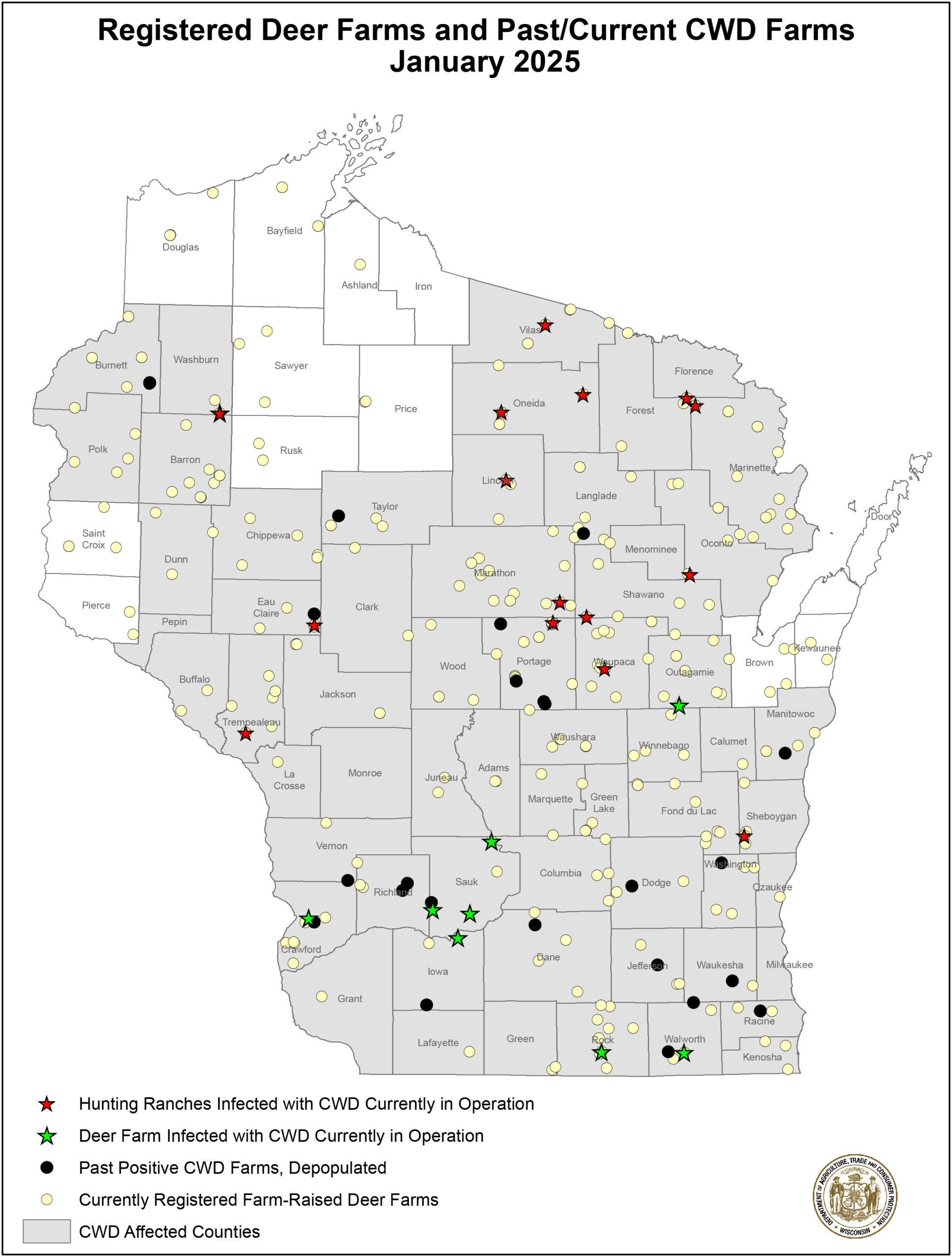
As part of that, she encouraged hunters to take part in free CWD sampling. Hauge said he’s concerned the state might have to foot the bill for CWD monitoring and research amid cuts at the federal level. Last year, the state spent more than $2.6 million on CWD-related expenses, including nearly $1.6 million in federal funding.
Larson said it’s too early to tell if federal funding for CWD has been affected.
Last year, Wisconsin received $200,000 in federal funding to support carcass disposal to reduce transmission of the disease. More than 150 dumpsters, landfills and other sites were made available to dispose of deer carcasses in the state last year along with about 240 sampling sites.
Gov. Tony Evers has proposed $1 million in one-time funding under the 2025-27 state budget to purchase more deer carcass disposal sites, as well as $1.1 million and 7 positions to improve CWD testing and disease surveillance at the Wisconsin Veterinary Diagnostic Lab. Republican lawmakers stripped a similar request from the current budget.
Hauge noted that Evers has also proposed raising license fees for fishing, hunting, trapping and stamps. That would raise $75 million in additional revenue over the two-year budget for conservation and wildlife projects as the state’s fish and wildlife account faces a $16 million shortfall by 2026.
The DNR has sampled more than 334,000 deer since the agency began monitoring for the disease more than two decades ago. Of deer sampled, 14,360 have tested positive.
Wisconsin Public Radio, © Copyright 2026, Board of Regents of the University of Wisconsin System and Wisconsin Educational Communications Board.
